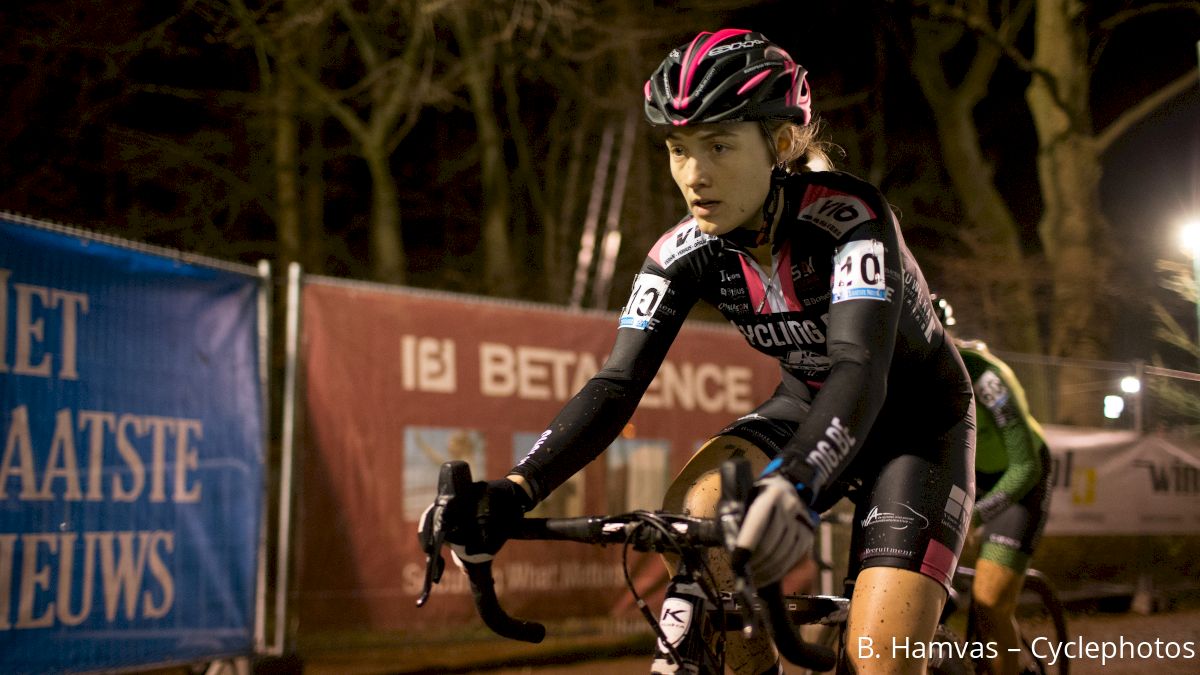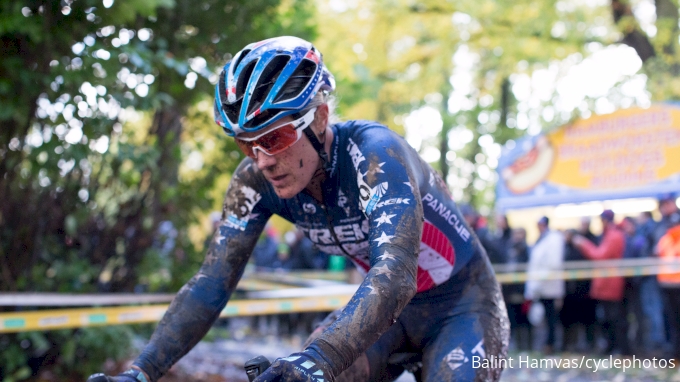Does CX Nationals Lead To Worlds? Not Necessarily
Does CX Nationals Lead To Worlds? Not Necessarily
What role does Nationals play in making the U.S. team for the cyclocross World Championships? It's not as simple as it sounds.

When we spoke with Elle Anderson back in November, the Belgian-based American racer hinted that attending the U.S. National Cyclocross Championships might not be on her 2017-18 calendar. She said she’d make the call when the time came.
This week, we contacted Anderson via email, and she confirmed she’d made the difficult decision of skipping nationals in Reno, Nevada.
“For the last two seasons, it’s likely that my result at Nationals helped me secure a spot on the world’s team," Anderson told us. "This year, I’m hoping my strong World Cup performances and other European results are sufficient for a discretionary selection.”
Rather than endure the 10-hour flight between continents, and try to adjust to a nine-hour time difference, Anderson opted to stay home in Oostende with her Belgian family. She said she’d remain focused on the Superprestige series, as well as the upcoming World Championships.
No doubt Anderson is a shoe-in for one of the five start positions allotted to the elite women’s team at worlds. She recently placed sixth against a stellar field at Superprestige Diegem, and has consistently ridden in and around the top 10 against international fields this season.
However, her decision to opt out of the U.S. National Championships made us wonder: What role does Nationals play in making the U.S. team for the cyclocross World Championships?
The guidelines for team selection are clearly defined, yet somewhat complex (and can be found here on USA Cycling’s website).

The USA Cycling selection criteria outlines both how an athlete is selected for a start position at worlds and what performance standards he or she must meet in order to receive funding.
On each U.S. cyclocross worlds team — elite men, elite women, junior men, under-23 men, and under-23 women — only two of the five start positions receive funded support, such as air travel and ground transportation, lodging, and mechanical service.
The amount of funding a team member receives is further broken down into three levels: full, partial, and self-funded. Fully funded athletes (Level 1) receive top-to-bottom support from USA Cycling. Partially funded athletes (Level 2) must pay their own airfare, but are otherwise supported once they’re on the ground at the World Championships site. Self-funded athletes (Level 3) must cover their own airfare and pay a $1,000 service to USA Cycling. The fee goes toward lodging, ground transportation, and mechanical support.
The results required to garner an automatic nomination to the worlds team and to qualify for one of the three funding levels are relatively consistent, varying only slightly between age and gender categories. For example, to receive Level 1 funding, an elite male racer must have achieved a podium finish at the previous World Championships, have been top five at a U.S. based World Cup (or top 10 at a World Cup in Europe), or placed on the podium at one of the Belgian national series races, the DVV Verzekeringen Trofee, or the Superprestige series.
For American women — who possess more depth at the international level — the results standards are slightly higher. For example, an elite woman must earn a podium finish at a World Cup in Europe or win a DVV Trofee or Superprestige race to receive Level 1 funding. Based on their results so far, Katie Compton and Katie Keough have secured the two funded worlds start positions.
So how do the national championships play into the worlds team selection and funding process? As it turns out, it's not that much more than other major races throughout the season.
Winning your respective National Championship qualifies you for Level 2 funding from USA Cycling. But so does winning the Pan-Am Championships, placing in the top 15 at a World Cup (for elite men), or being the highest-ranked rider in a selection of domestic UCI C1 races.
For an athlete like Anderson — who’s ranked 21st in the world on UCI points, and is the fourth-highest ranked American woman in the elite field — competing at U.S. Nationals likely won’t factor into her ability to make the worlds team, or potentially receive funding.

She’d need to beat favorites like Katie Compton, Katie Keough, or Ellen Noble at Nationals to earn an automatic selection to the worlds team. But that wouldn’t guarantee her funding, given Compton and Keough have already secured the two supported start positions from USA Cycling. Traveling to Nationals would cost Anderson significant time and money, without any tangible benefits — other than the satisfaction of competing against her compatriots.
Anderson will likely receive a start position on the U.S. elite women’s team at worlds via USA Cycling’s discretionary athlete selection committee.
Should the U.S. Cyclocross National Championships play a greater role in worlds team selections? That’s hard to say, and a question USA Cycling has undoubtedly struggled with.
We’ve seen in road racing that, as more and more professional racers become based in Europe, the U.S. National Championship often lacks our country’s best athletes. Yet, with American WorldTour pros focused on more prominent European races, it’s understandable that even the most patriotic racers would forego the chance to race for a national title.
In cyclocross, U.S.-based sponsorships currently help to entice top pros like Compton and Hyde to return from Europe for Nationals. Beyond the sheer pride of wearing the stars and stripes, claiming the national title also helps them garner greater endorsements.
For the sake of great racing at U.S. Cyclocross Nationals, let’s hope that remains the case.